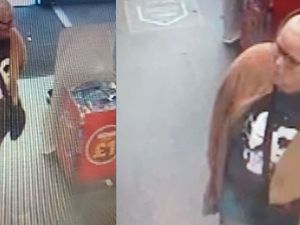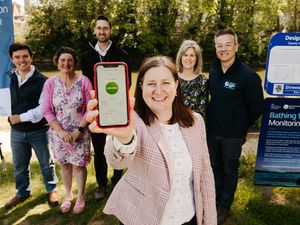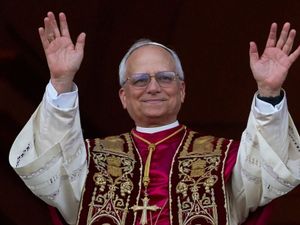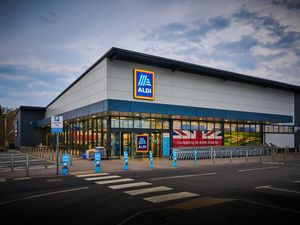How the Shrewsbury town centre Travelodge plan was submitted, condemned and withdrawn in six weeks
In just six weeks plans for a new Travelodge in Shrewsbury town centre have been submitted, led to a wave of protest, and been withdrawn again.
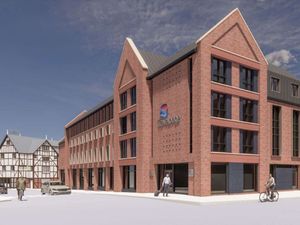
Developers applied to build an 83-bed hotel on the site of the Barker Street car park next to Rowley's House - a timber-framed building dating back to the late 1500s built by successful wool merchant Roger Rowley - and the brick mansion built by his son in 1618.
Both are within the core of the Shrewsbury Conservation Area and are interconnected, with the latter believed to be the earliest brick building in the town.
Here's the timeline of how the plans have come in and gone back to the drawing board in recent weeks.
Plans submitted
The Shropshire Star first revealed on September 15 that an application had been submitted to build a four-storey 436sq m hotel with ground-floor retail space on Barker Street Car Park in Shrewsbury, inbetween the Baptist Church in Claremont Street and Grade II-listed Rowley's House.
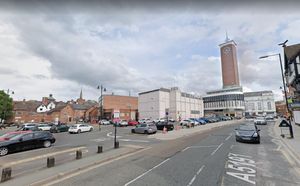
The plans included a ground floor area which would accommodate three retail units and the hotel entrance/administration areas, with a service yard to the rear, five parking spaces and a reduction of the existing public parking provision from 93 spaces to 29 spaces. Above would be 83 bedrooms and associated service accommodation before a roof containing concealed open air areas to house air source heat pumps.
The plans by Morris Property - which included a design and access statement prepared by AHR Architects - said: "It is clear to the client and design team that the redevelopment of the Barker Street car park site presents a real opportunity for the growth of visitor numbers to Shrewsbury, for the continuation of the regeneration of the west end (started by the Tannery development, 2019) and will be of benefit to the town as a whole.
"This unique opportunity will undoubtedly be a catalyst to the revitalisation of the other vacant plots and underused buildings in the area, particularly Rowley House and Mansion, and will be a positive addition to Shrewsbury’s built environment."
It described the hotel as a "contemporary addition to the West End using traditional materials and forms to reflect the heritage of the site drawing inspiration from the character and scale of the buildings in the area", adding: "The building must redefine the streetscape of Barker Street by building to the pavement edge, link Rowley’s House and Mansion to the town once again and reduce the traffic domination in the area in favour of pedestrian movement."
Objections
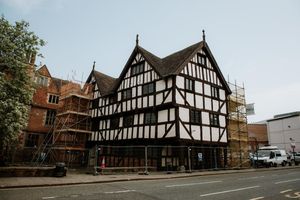
Objections quickly started to come in.
Within days comments on the proposal from members of the public described it as an "abomination" and "monstrosity".
Many criticised the loss of parking, saying the current Barker Street car park is often full and suggesting there is already a lack of spaces around the town centre. Others said the views of Rowley's House would be spoiled, describing it as an "architectural gem", while further objectors suggested that additional retail units were not welcome when many shops are already vacant.
Some did comment in favour of the plans, welcoming the 'affordable, accessible family accommodation at the heart of Shrewsbury', and reducing parking would help move Shrewsbury town centre to being traffic free and encouraging cycling and walking.
However, other groups also objected to the plans throughout October.
On October 10 the Shropshire Star reported that Historic England had warned the plans would create an "unduly large, monolithic structure" which would be "awkwardly juxtaposed" with nearby buildings and called for a redesign.
Ten days later later the Heart of England Baptist Association said there were concerns about how the hotel could "impact visibility and access to our building" next to the car park at the junction with Claremont Street.
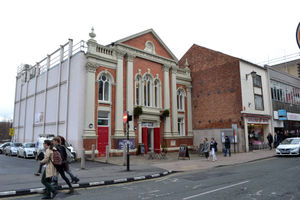
In a letter to Shropshire Council, baptist association administrator Karen Martindale added: "There is no adequate statement of the pre-applications consultations already carried out with neighbours and their outcome. It seems to us that this is a less than appropriate approach to the application process in an urban centre and is classic 'more haste, less speed' error."
The letter also suggests changes to the design of the building as it faces the church, describing the roof line as "jarring". However, she did say the church is not against the principle of the development.
Shropshire Council's Highways Department were not in favour though, with bosses saying the plans had 'fundamental issues'.
The Shropshire Star reported on October 17 that Mark Wootton, developing highways manager, had said the plan appeared to be reliant on nearby Shropshire Council car parks at Bridge Street and St Austin Street but couldn't guarantee they would remain available. He also questioned the inclusion of a small public car park at the rear, accessed via Hills Lane.
"It is difficult to understand the rationale to provide a small scale public car park served via a cul-de-sac both in terms of its benefit towards public car parking but also attracting the use of this car parking at times when is full and therefore resulting in an unnecessary trafficking of Hills Lane and demand on the Hill Lane traffic signals to find spaces that are not available," he wrote in his letter in response to the application.
"It would seem more appropriate that on site parking were made available to the hotel and not as a public car park."
Calls for plans to be withdrawn
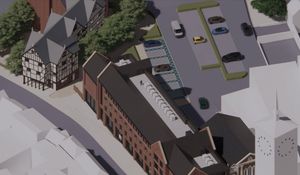
After weeks of criticism, Shropshire Council's Historic Environment Team became the latest consultee to object to the proposals, saying they should be withdrawn or refused - something we reported on October 22.
A letter from the team outlined concerns over the hotel's appearance and its impact on the nearby Rowley's House and Mansion, stating it would have an "overbearing effect" on the Grade II* Listed building.
It said that although the proposed design was similar to the nearby Tannery redevelopment, it was more sensitive due to being situated on a "prominent street corner".
The letter stated: "It is accepted that the proposed hotel building utilises the same architectural language, in terms of the predominant use of brickwork, recessed fenestration pitched roofs and gables with standing seam coverings, as the nearby development on the Tannery site.
"However, the latter site is arguably less visually prominent within the surrounding townscape because it is not situated on a prominent street corner."
The letter that the building would have an "overly dominating presence in the streetscape".
Back to the drawing board
Earlier this week Morris Property withdrew its plans, but said a revised proposal was being worked on.
On October 24, a statement the developer said that it was now working with the council's planning officers on a more suitable proposal – and would be listening to criticisms from organisations, including Shrewsbury Civic Society.
A spokesman said: “Taking on board comments from the Civic Society and others we are working closely with the planning department on the aesthetics of the design."
Calls for a masterplan
Since the withdrawal of the plans, Shrewsbury Civic Society has insisted a 'masterplan' is needed for the project, otherwise it risks 'pleasing no-one and offending everyone'.
Mike Dineen, chairman of the group said Morris Property's decision to go back to the drawing board was "sensible and welcome" as it will allow for "further reflection and consideration of the original application".
"For over 20 years the society has strongly supported the principle of development on this site however scale, such as height, and the immediate effect on the adjacent area does require further consideration," he said.
As well as welcoming the pledge from Morris Property to listen to the comments from objectors, he added: "However, the society also reiterates its key comment to the application objection, that this area needs a masterplan as a prerequisite for any development on this site. The society would be happy to discuss this further with the relevant bodies. Otherwise we could end up with a hotch-potch that pleases no one and offends almost everyone."


